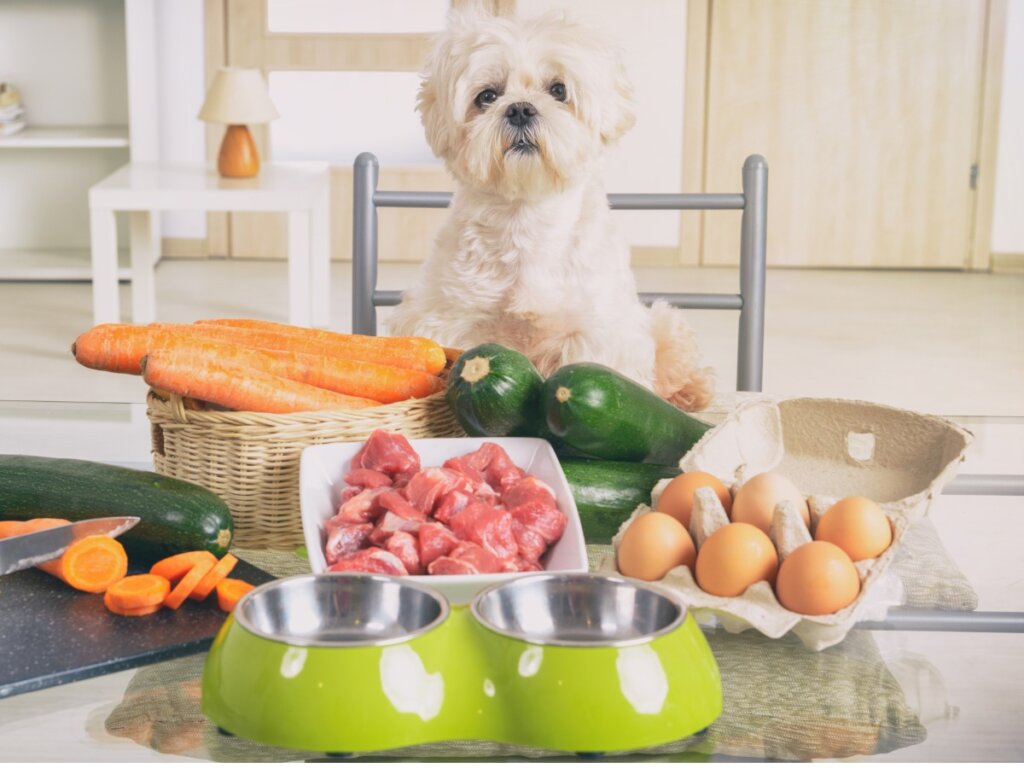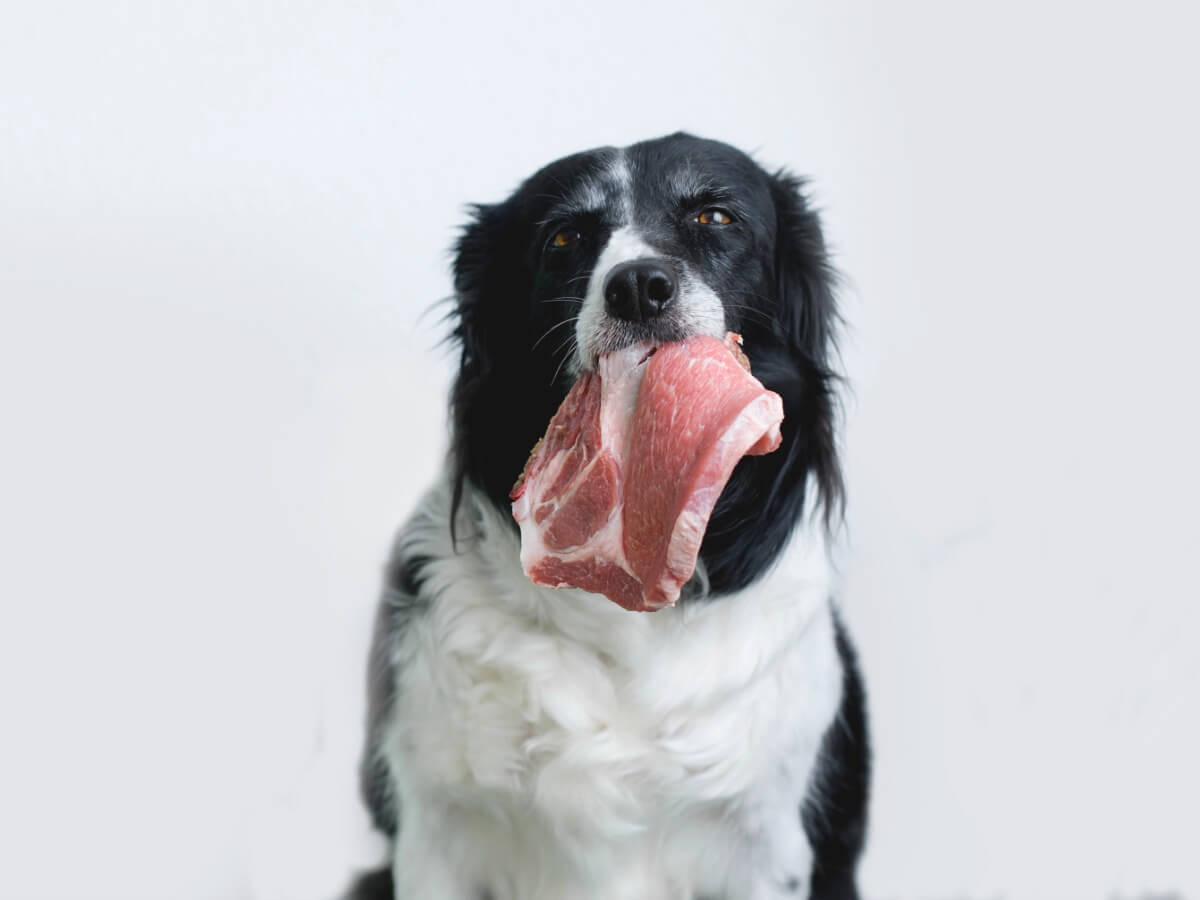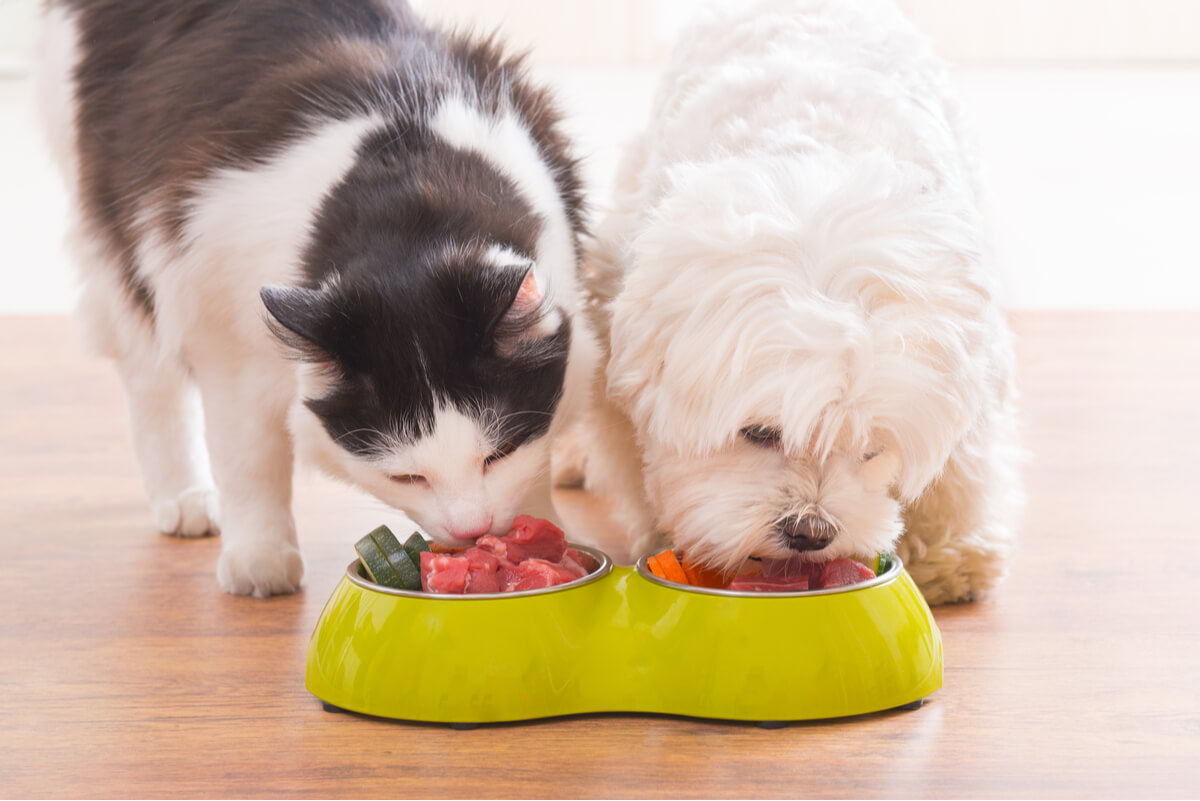Raw Pet Food Is No Healthier, Experts Say
Experts on the subject assure that feeding pets based on raw food puts the health of animals and the people who live with them at risk.

There’s a debate raging around the subject of pet food at the moment. According to some experts, raw pet food is no healthier than other food. They claim that it could actually be dangerous for the animal and those who live with it, especially the elderly or children. However, others are convinced that it’s an ideal, safe diet for animals.
Some scientists claim that there are no benefits to this practice, but more and more people are choosing to use it as a method of feeding their pets. In countries like the Netherlands, 50% of dog owners say they use raw meat as the main food for their pets. However, we’ll explain why this may well not be a recommended diet in this article
What is the BARF diet?
The BARF diet (Biologically Appropriate Raw Food) is a raw meat-based feeding method that some consider more conducive and natural for their animals. This diet includes not only meat, but also offal, bones, fruits, vegetables, oils, and nuts.
This method – which excludes all types of processed food – is put into practice by those who believe that the very nature of dogs and cats, shows us that their bodies aren’t designed to be fed on croquettes or the like. In other words, it certainly seems like a healthier and more organic option at first glance.

Benefits and harms
Defenders of the BARF diet claim that the method improves the pet’s coat and helps boost the immune system. The medical director of BarfChile says that excessively processed foods are easy for the owner, but can damage the animal’s intestinal microbiota.
For this doctor, processed foods lead to diseases such as diabetes or obesity.
However, other experts claim that raw pet food isn’t healthier. Unlike those who advocate the BARF diet, these people claim that this diet lacks nutrients and can be harmful to the animals’ teeth, intestines, and other parts of their bodies.
Consequences of raw pet food
According to the European Scientific Counsel, pets that consume raw food can easily excrete pathogenic/zoonotic bacteria in their feces. You run the risk of transmission to people through direct contact. This transmission also usually occurs through cross-contamination of food in the kitchen after its preparation.
Feeding through the BARF diet, according to the experts who oppose it, represents a risk of exposure to bacteria for pets.
Furthermore, raw diets carry a high risk of nutritional imbalance, especially in young growing animals. The multiplication of certain parasites can be favored in a diet of untreated food, as they complete their biological cycle as the carnivores ingest raw or undercooked animal proteins.
Parasites in food
A study published by the British Veterinary Association assures us that they found bacteria such as Salmonella and Campylobacter in diets based on raw meat for dogs. These bacterial species are capable of passing from animals to people, thus putting those who live with the dog at risk if they become infected.
The offal used in these diets aren’t even subjected to any type of treatment to reduce the microbial content, says the research. The risk here is that they’ll have a potential presence of pathogenic microorganisms that will undoubtedly affect the pets directly.
The study also found the presence of bacteria belonging to the Enterobacteriaceae family and the Clostridium perfringens species. Therefore, it’s important to be more careful when deciding whether this diet really does benefit your pet. Some animals have sensitive stomachs that could be really affected by carelessness in their diet.
How to properly feed your pet
To find a suitable diet for your pet, it’s important to first consult with a professional in the field. An expert will be able to advise you if your animal has anything that should be taken into account when feeding it. You really don’t want to expose your pet to danger unnecessarily by providing a poor diet for them.
Cooking food may well be a better and safer option for the animal. You can also use specific kitchen equipment to prevent the spread of bacteria on other implements. Similarly, if you really do want to use raw meat in the pet’s diet, it’s important to ensure that the shop you buy it from is reliable and hygienic.
It’s also recommended to keep meat separate from other food and avoid giving it to a dog on antibiotics, as it could increase its bacterial resistance.

Finally, remember that a good diet means a healthy and happy animal. Their health is vital, and you should take into account that diseases, viruses or bacteria from your pet could affect your own health too. Correct handling of food is essential in order to avoid risks.

